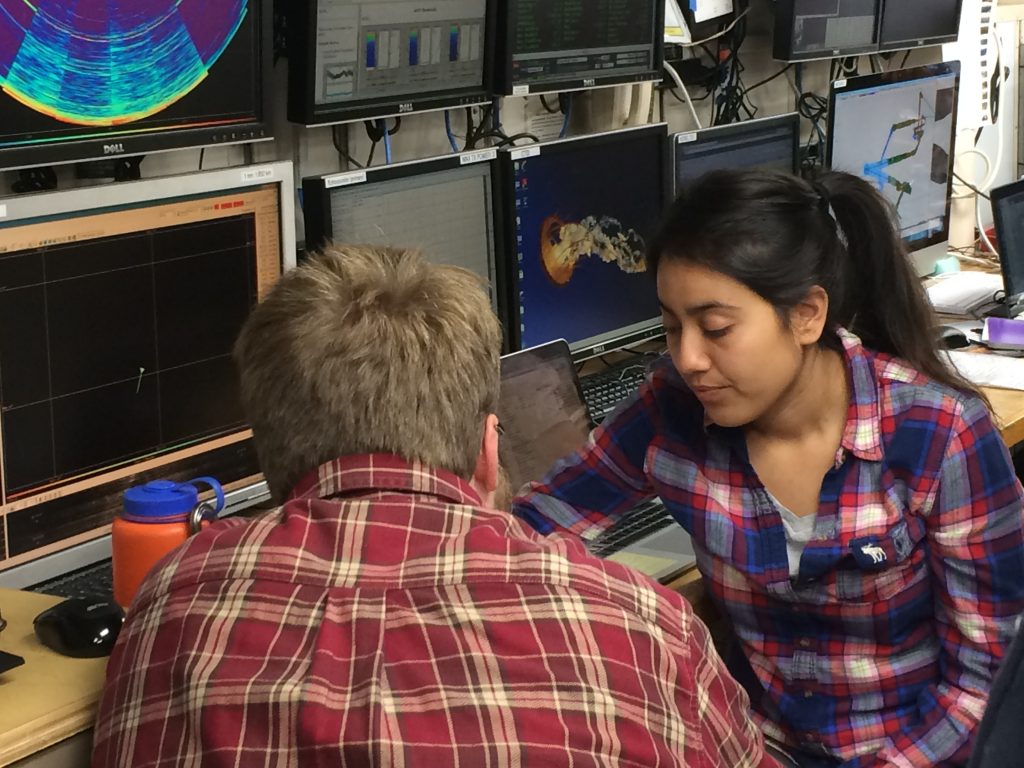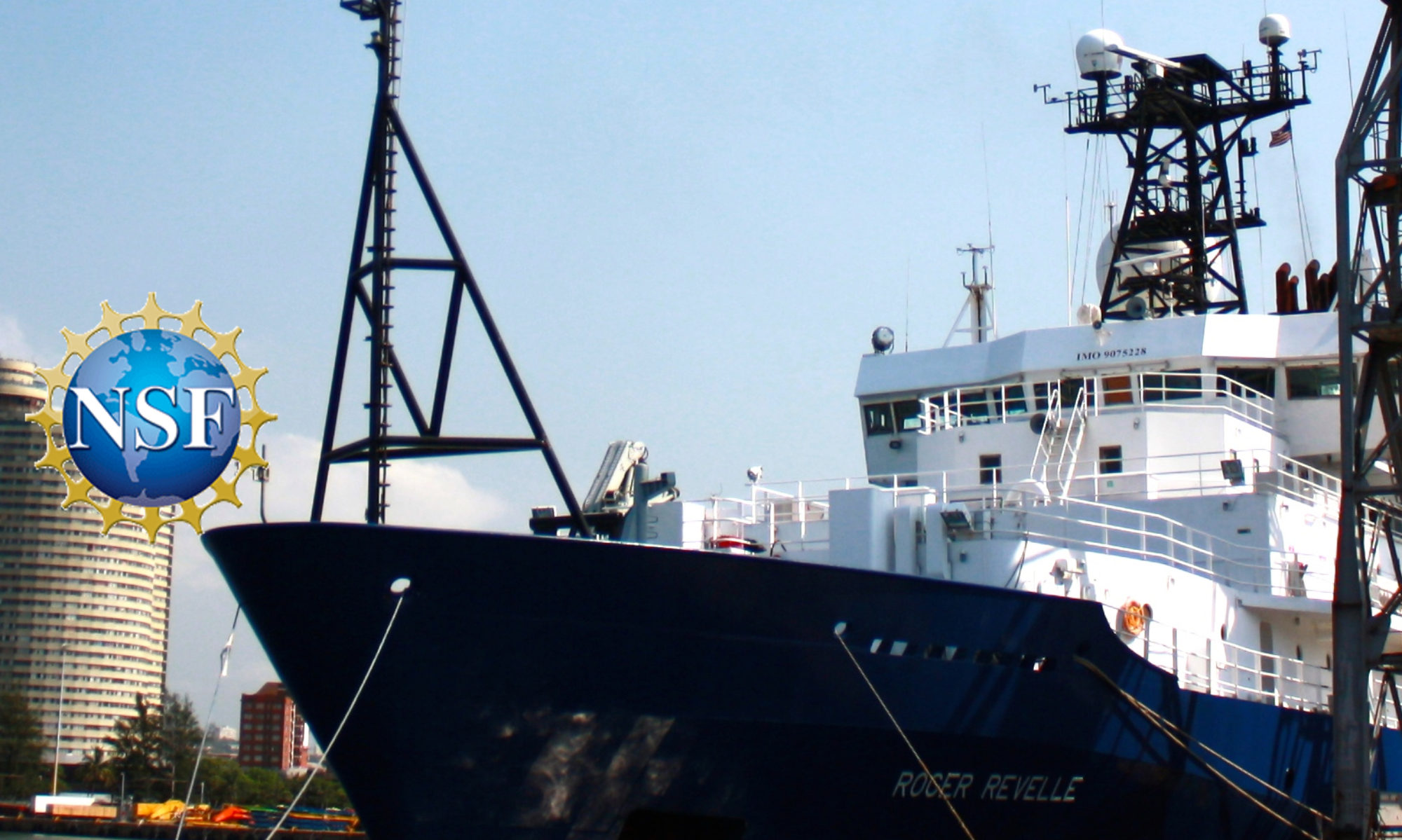By Fani Ortiz
Two years ago, before I became a graduate student, I would have never thought I would be at sea on a seismic research expedition. Since I began my graduate program at Texas A&M University, I have had the opportunity to be involved in great research projects: exploring the geology of the Coast Range Ophiolite sequence in California and Canada using geophysical methods, conducting nanoscale rock magnetism experiments in the University of Minnesota and Cambridge (UK), and learning more about physical and chemical properties of rocks and how they interact with fluids at the University of Leicester (UK). Now I’m aboard the R/V Revelle (my first time at sea), collecting multichannel seismic data along the geologically complex Cascadia Margin.

For my master’s thesis research, my main research project focuses on trying to improve understanding of how to measure climate signals recorded on seafloor sediments, by using a variety of geological and geophysical data sets from the eastern equatorial Pacific Ocean. This region of the Pacific is located a few degrees from the equator, on smooth unaltered seafloor, in an area where “high sediment accumulation rates” (.02 millimeters per year, a sprinkle of dust) can be found. This region has about 400 meters of unaltered sediment cover before we reach the hard rock underlying the sediments, which records a wealth of information about past climate conditions going back to 28 million years ago. The information extracted from these sediments can be used by paleoceaonographers (scientists who study the history of the oceans) to reconstruct past climate and ocean conditions, this information is used to help us understand current and expected climate conditions.
To accomplish my research goal, I use marine seismic data, which is like an ultrasound of the earth that helps me image kilometers under the ocean floor, and sediment samples collected from the ocean floor. I then analyze my sediment samples to understand one small area of the ocean and use seismic images to correlate my data to large areas of the ocean. With this data, I look for patterns in my rock samples and seismic images to understand how sediment movement might affect the climate signals recorded in the measured sediments.
However, for my research project, I did not get the opportunity to collect my own seismic data. So, I applied to be a part of the Seismic ECS Training Cruise in order to gain marine field experience. During this expedition, I hoped to learn from senior geoscientists how to efficiently design my own project, including the challenges involved with the acquisition, processing, and interpretation of marine seismic data.
The expedition has exceeded my expectations. From day one we were given important roles that are crucial to the success of our expedition including being chief scientist, co-chief scientist (roles with a lot of responsibility including leading the science team, communicating with the seismic data acquisition team and ship’s captain, and making sure the proposed work is reasonable and attainable with the available resources), and seismic processer (in charge of assessing the quality of the data acquired, and processing the seismic data collected to images of the subsurface). We quickly learned that communication and creative problem solving are key to successfully acquiring seismic data and helping the ship’s crew navigate the Revelle to areas of interest.
The ECS Seismic Training Cruise has taught me how to work as part of a team in a fast-paced environment, and how to communicate successfully with teammates to accomplish research objectives. After my training experience, I feel more confident in my ability to be a chief scientist in future marine expeditions and to continue contributing to the scientific community. My unique research experiences would not be possible without the support of the National Science Foundation and a dedicated mentor group who has been leading this training effort.
— Fani Ortiz is a graduate student at Texas A&M University
